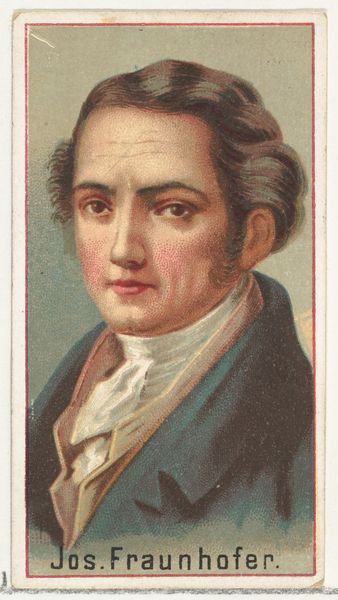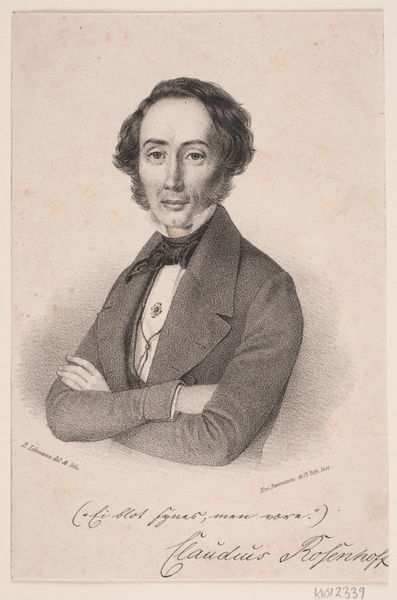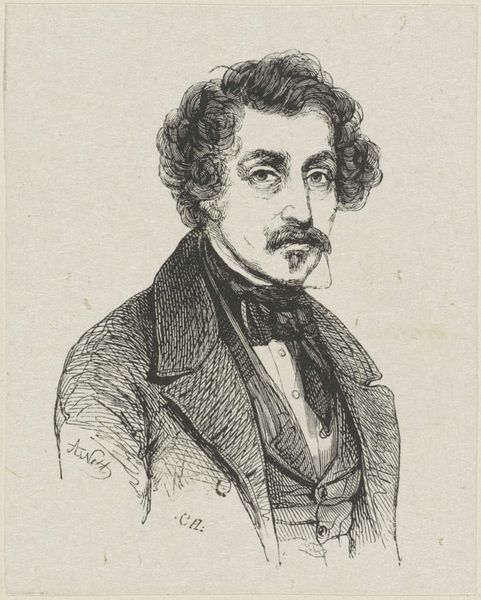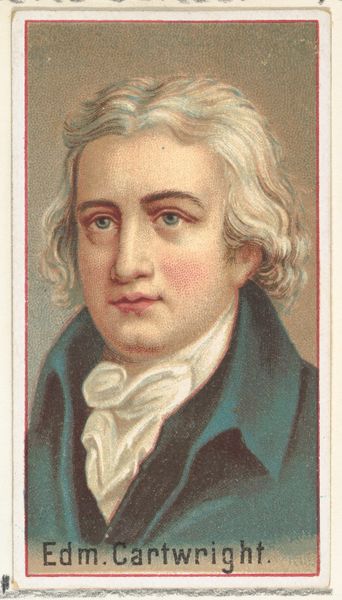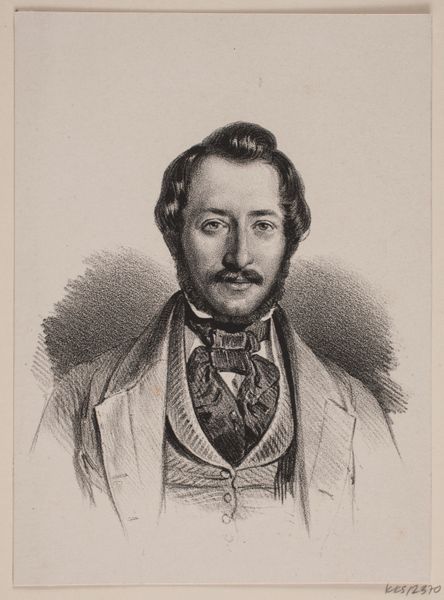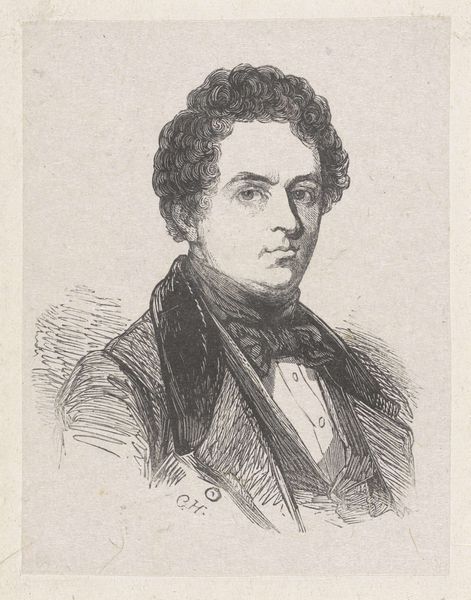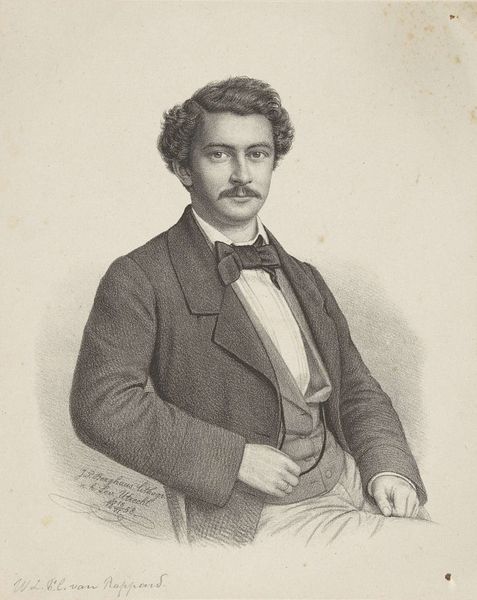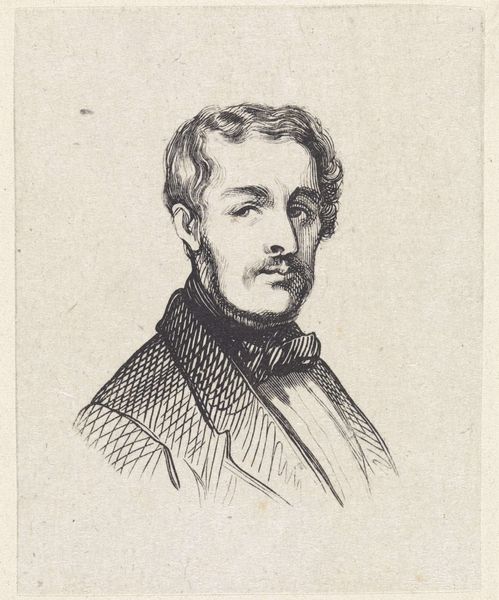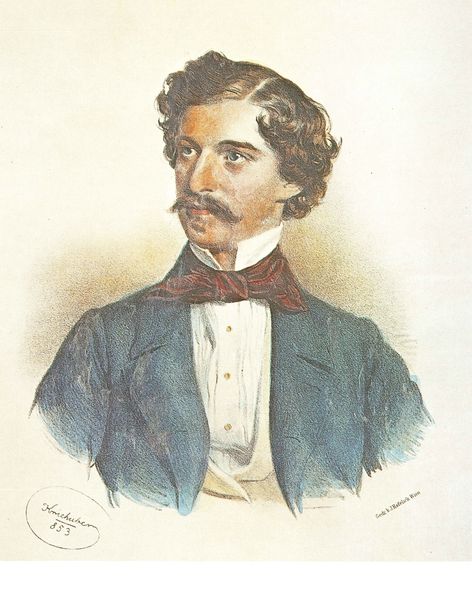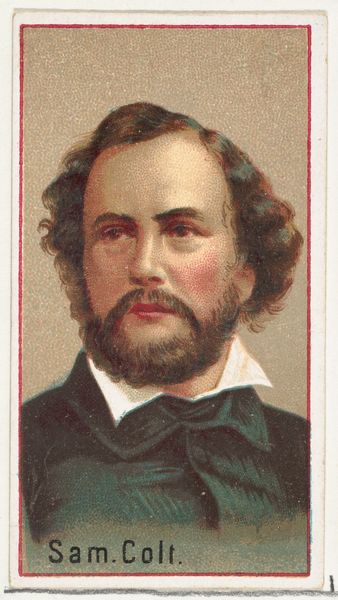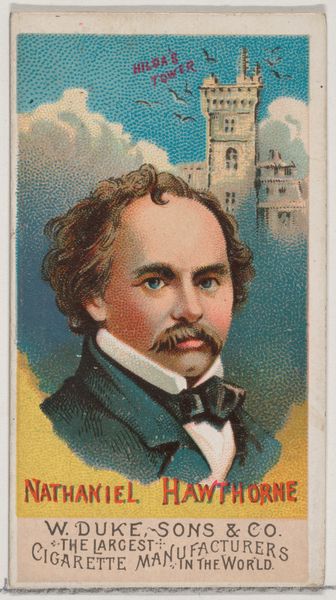
L. J. M. Daguerre, printer's sample for the World's Inventors souvenir album (A25) for Allen & Ginter Cigarettes 1888
0:00
0:00
drawing, print, photography
#
portrait
#
drawing
# print
#
impressionism
#
photography
Dimensions: Sheet: 2 3/4 x 1 1/2 in. (7 x 3.8 cm)
Copyright: Public Domain
Editor: This is L. J. M. Daguerre, printer's sample for the World's Inventors souvenir album for Allen & Ginter Cigarettes, dating back to 1888. It's a print, and it feels like a formal, almost reverent portrait. What can you tell me about this piece? Curator: It's fascinating to consider this image as a cultural artifact. Daguerre, the subject, revolutionized image-making, but here he’s being consumed by a tobacco company for profit. How do you think the commercialization of his image, reduced to a collectible card, impacts our understanding of his legacy, especially considering the context of the late 19th century? Editor: That's an interesting angle I hadn't considered. It’s like his intellectual property, or image, being repurposed for advertising. Does the album featuring "world inventors" have a similar feel of exploitation or appropriation? Curator: Precisely. The "World's Inventors" album could be interpreted as a form of cultural colonization, appropriating the accomplishments of these inventors to add value to a commodity – cigarettes. The act of collecting these cards arguably reduces complex individuals and their contributions to mere tokens in a consumerist society. How does that sit with you? Editor: I see your point. It makes you question the motivations behind celebrating innovation when it's tied so closely to a commercial agenda. So, is this portrait really about honouring Daguerre, or selling more cigarettes? Curator: The question of intentionality is important. Was it homage, or purely transactional? Probably both! The card itself, small and widely distributed, democratizes access to imagery but simultaneously flattens complex narratives into easily digestible, consumable pieces. And tobacco production’s dependence on exploited labor adds another ethical layer. Editor: So it is problematic on different levels. Thanks for pointing those out! I hadn't initially seen this unassuming little print as encapsulating such complex power dynamics and questions about commodification. Curator: Exactly! And that’s the value of art historical analysis – it compels us to look beyond the surface and unpack the layers of meaning embedded within an artwork. I think that is a good outcome.
Comments
No comments
Be the first to comment and join the conversation on the ultimate creative platform.
